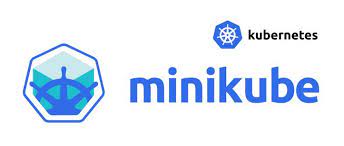Step By Step Guide on Minikube
 Aditya Sahai
Aditya Sahai
Step 1: Install Minikube
Before you can use Minikube, you need to install it on your local machine. You can download the Minikube binary from the official website or use a package manager like brew (on macOS) or chocolatey (on Windows) to install it.
Step 2: Start a Minikube Cluster
Once Minikube is installed, you can start a local Kubernetes cluster by running:
shellCopy codeminikube start
This command creates a single-node Kubernetes cluster within a virtual machine on your local system.
Step 3: Verify the Cluster Status
You can check the status of your Minikube cluster by running:
shellCopy codeminikube status
This command will show you if the cluster is running and provide some details about its health.
Step 4: Interact with Your Cluster
With your Minikube cluster up and running, you can interact with it using kubectl, the Kubernetes command-line tool. You don't need to configure kubectl because Minikube takes care of that for you.
For example, you can run:
shellCopy codekubectl get nodes
This command should show you the single node in your Minikube cluster.
Step 5: Deploy Applications
Now that your local cluster is ready, you can deploy applications and Kubernetes resources just as you would in a full-scale cluster. Create Kubernetes configuration files (YAML) for your applications and use kubectl apply to deploy them.
Step 6: Access the Kubernetes Dashboard (Optional)
Minikube also provides a dashboard that you can use to monitor and manage your local cluster. To access it, run:
shellCopy codeminikube dashboard
This command will open a web browser with the Kubernetes dashboard.
Step 7: Stop and Delete the Minikube Cluster
When you're done working with your local cluster, you can stop and delete it to free up resources on your machine. Use the following command:
shellCopy codeminikube stop
minikube delete
This command will halt the Minikube cluster and remove it entirely.
Conclusion
Minikube is a valuable tool for local Kubernetes development and testing. You can use it to experiment with Kubernetes features, develop and test applications, and learn about Kubernetes without the need for a full-scale cluster. Remember that Minikube is for local development and testing, and you may need to use a cloud-based or on-premises cluster for production workloads.
Subscribe to my newsletter
Read articles from Aditya Sahai directly inside your inbox. Subscribe to the newsletter, and don't miss out.
Written by
